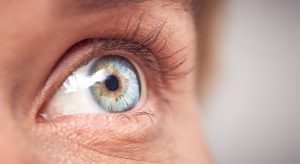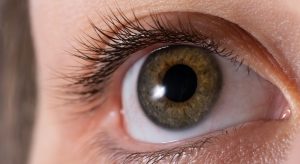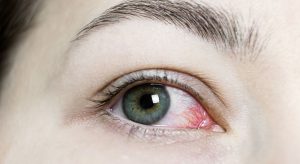Night Vision and Halos After LASEK: What You Should Know

If you’ve recently had LASEK surgery, you may have noticed something unusual when driving at night light halos, glare, or starburst patterns around headlights and street lamps.
These temporary effects are among the most common parts of early recovery after laser eye surgery. While they can be unsettling at first, they’re usually a normal sign that your eyes are healing and adjusting to their new optical shape.
In this article, we’ll explain why night vision changes and halos occur after LASEK, how long they last, and what you can do to help your vision stabilise comfortably and safely.
Understanding Night Vision and the Human Eye
At night or in low light, your eyes rely on rod cells in the retina, which are highly sensitive to light but less precise than cone cells (used for daytime vision).
When your pupils dilate in the dark, they allow more light to enter including scattered or unfocused light caused by corneal healing, which can create glare or halos.
This is why night vision symptoms are common after laser procedures that reshape the cornea, such as LASEK or LASIK. As the corneal surface smooths and refines during healing, these effects typically fade.
Why LASEK Can Cause Halos and Glare

LASEK is a surface laser eye surgery that reshapes the top layer of your cornea to correct refractive errors such as short-sightedness or astigmatism.
During the early weeks of healing, your corneal surface may be slightly irregular as new epithelial cells regenerate. This unevenness scatters incoming light, especially at night, leading to:
- Halos: Rings of light around bright sources
- Glare: Increased brightness or “flares” from headlights
- Starbursts: Radiating light patterns extending from points
These are temporary optical side effects part of the natural recovery process rather than signs of permanent damage.
How Common Are Halos After LASEK?
It’s completely normal to experience some visual effects after LASEK. Clinical studies suggest that:
- Around 40–50% of patients notice halos or glare during the first few weeks.
- Most report significant improvement within 1–3 months.
- Only a small fraction (<5%) experience long-term symptoms.
Modern LASEK technology, especially wavefront-guided and topography-guided lasers, has dramatically reduced the frequency and intensity of night vision disturbances compared with older systems.
The Science Behind the Healing Process
After LASEK, your cornea undergoes three key phases of recovery:
- Epithelial Regeneration (Days 1–5)
The outer layer of the cornea heals and smooths over. During this time, vision may appear hazy or fluctuating, particularly at night.
- Neural and Optical Adjustment (Weeks 1–4)
The cornea continues to stabilise, and your brain adapts to new visual signals. Night vision often feels most affected in this period as your pupils respond differently in dim light.
- Surface Refinement (Months 1–3)
Minor irregularities fade as tissue remodels, improving clarity and reducing glare. Most halos disappear entirely once the cornea reaches its final smoothness.
What Halos Look Like

Patients often describe post-LASEK halos in different ways:
- Soft glow: A faint circular light halo around lamps or headlights.
- Bright ring: More defined, usually in very dark conditions.
- Diffuse glare: Light appears to spread outward, reducing contrast.
- Starburst pattern: Radiating lines around light points.
These effects may be more noticeable when:
- You’re tired.
- Your eyes are dry.
- You’re looking at bright lights against dark backgrounds.
Factors That Influence Night Vision After LASEK
Every eye heals differently, but several factors affect how strongly you experience halos and how quickly they resolve.
- Pupil Size
People with naturally larger pupils may notice more halos at night since more peripheral light enters through healing areas.
- Prescription Strength
Higher prescriptions require deeper laser correction, which can temporarily affect the smoothness of the optical zone.
- Corneal Healing Speed
Some individuals’ epithelial cells regenerate faster, reducing recovery symptoms sooner.
- Dry Eyes
Tear instability increases light scatter. Keeping eyes hydrated significantly reduces night vision disturbances.
- Environmental Lighting
Low ambient lighting exaggerates contrast differences, making halos seem more intense.
How Long Do Halos Last After LASEK?
In most cases, halos fade substantially within 4–6 weeks and continue improving for up to three months.
- First 2 weeks: Common and expected.
- Weeks 3–6: Noticeable improvement.
- Months 2–3: Nearly all halos resolved.
For a small number of patients, faint halos may persist slightly longer but rarely interfere with everyday activities.
Persistent or worsening glare after several months may indicate another cause, such as residual prescription, dry eyes, or slight corneal haze all treatable by your ophthalmologist.
Coping with Halos During the Healing Period
You don’t need to “suffer through” halos there are effective ways to manage them during recovery.
- Use Lubricating Eye Drops
Artificial tears reduce dryness and surface irregularities, improving light clarity. Use preservative-free drops as directed by your surgeon.
- Limit Night Driving (Early On)
Until your night vision stabilises, it’s best to avoid long drives after dark particularly in the first two weeks.
- Increase Ambient Lighting Indoors
Keeping your surroundings softly lit at night reduces contrast and makes halos less noticeable.
- Wear Sunglasses During the Day
Bright daylight can temporarily heighten night glare sensitivity. Sunglasses reduce light stress and help your eyes adjust more comfortably.
- Follow Your Medication Schedule
Anti-inflammatory and lubricating drops prescribed after Lasek surgery in London clinics support smooth corneal healing and reduce surface scatter.
- Stay Hydrated and Rested
Dryness and fatigue can both worsen visual disturbances. Drink plenty of water and take breaks from digital screens.
Preventing Long-Term Halos
While halos are usually temporary, certain strategies can minimise their likelihood or duration.
- Choose a Wavefront-Guided Treatment
Wavefront-guided lasers tailor the treatment pattern to your unique corneal shape, reducing optical imperfections that can cause glare.
- Manage Dry Eyes Proactively
Use lubricating drops before symptoms start. For chronic dryness, your doctor may recommend tear supplements or punctal plugs.
- Attend All Follow-Up Visits
Regular check-ups allow your surgeon to monitor healing and address any irregularities early.
- Protect Your Eyes from UV Light
Ultraviolet exposure can delay corneal recovery and contribute to haze. Wear sunglasses outdoors, even on cloudy days.
- Avoid Eye Irritants
Smoke, dust, or excessive screen exposure can slow surface healing. Keep your environment clean and comfortable.
LASEK vs LASIK: Differences in Night Vision Recovery
If you’ve been wondering whether LASEK or LASIK causes more night vision issues, the truth is it depends on how your eyes heal and how much corneal tissue is involved.
With LASEK, the surface layer of your cornea is treated without creating a flap. You might notice a few more halos or glare around lights in the first few weeks, but that usually settles as your eyes heal over one to three months. The benefit? Your corneal nerves and surface recover more naturally, which can mean smoother, clearer vision in the long run and a lower risk of dryness.
With LASIK, a thin flap is made in the cornea before reshaping. Recovery tends to be quicker often just two to four weeks and early night vision can sometimes feel a bit clearer than with LASEK. However, because the flap slightly affects nerve healing, there’s a higher chance of temporary dryness during recovery.
In the long term, both treatments offer excellent clarity at night. But if you want to prioritise natural healing and minimise dryness, you might find LASEK gives you a small edge.
The Role of Wavefront and Topography-Guided LASEK
Advances in modern laser systems have made night vision side effects far less common than they were a decade ago.
Wavefront-Guided LASEK
This technology measures thousands of individual data points on your eye’s optical surface, customising laser pulses to correct even microscopic distortions.
Topography-Guided LASEK
This approach maps corneal curvature precisely, allowing the laser to even out irregularities that might otherwise cause glare or halos.
Both techniques reduce higher-order aberrations (HOAs) subtle imperfections that cause light scatter resulting in smoother night vision post-recovery.
When to Speak to Your Surgeon
While mild halos are normal, you should contact your clinic if:
- Halos worsen rather than improve after 2–3 months.
- You experience double vision, severe glare, or distorted shapes.
- Your night vision becomes unsafe for driving.
- Pain, redness, or cloudy spots appear suddenly.
These signs don’t necessarily mean something is wrong but your surgeon can quickly rule out treatable causes such as residual prescription, dryness, or epithelial haze.
Clinics such as Eye Clinic London have advanced diagnostic tools to assess healing and can provide personalised care for anyone undergoing Lasek surgery in London.
Managing Dry Eyes to Improve Night Vision

Dry eyes are one of the biggest contributors to glare and halo effects. Tears act as a smooth optical surface; when the tear film becomes uneven, light refracts unpredictably.
To combat dryness:
- Use artificial tears at least 4–6 times daily.
- Blink often, especially during screen use.
- Avoid air conditioning or heating blowing directly at your face.
- Eat foods rich in omega-3 fatty acids to support tear production.
If symptoms persist, your ophthalmologist may recommend medicated eye drops or in-office treatments like LipiFlow or punctal plugs to stabilise your tear film.
What Long-Term Vision Looks Like After LASEK
Once healing is complete, most patients enjoy sharp, stable vision in all lighting conditions without glasses or contact lenses.
Night vision typically becomes crisp and comfortable, even under challenging conditions such as driving in rain or fog.
Because LASEK preserves corneal integrity and avoids flap complications, your long-term results remain stable, and your risk of night vision regression is minimal.
Patient Experiences: Common Reassurances
Most patients report that halos are far less noticeable than they expected. Some even find them “interesting” during the first week before they fade entirely.
Here’s what patients typically describe:
“Headlights looked like soft rings at first, but after about a month, they disappeared.”
“My night vision is actually better now than before surgery I used to struggle with glare from glasses.”
“It was a little distracting early on, but my eyes adapted quickly.”
Hearing these real experiences can be reassuring if you’re in the early phase of recovery and noticing similar symptoms.
Myth vs Fact: Clearing Up Common Misconceptions
You might have come across a few misconceptions about night vision after laser eye surgery, especially when comparing LASEK and LASIK. Let’s clear up some of the most common ones.
Myth 1: “Halos mean something went wrong.”
It’s easy to worry if you start seeing halos around lights after surgery, but they’re actually a normal part of the healing process. As your cornea smooths and stabilises, these effects gradually fade away.
Myth 2: “LASEK always causes night vision problems.”
That used to be a concern with older techniques, but not anymore. Modern LASEK produces excellent long-term night vision often just as sharp and clear as LASIK once your eyes have fully healed.
Myth 3: “Only LASIK patients see well at night.”
Both LASEK and LASIK can deliver equally sharp night vision once healing is complete. The main difference lies in how quickly that clarity returns, not the final outcome.
Myth 4: “Eye drops don’t help halos.”
Actually, they can make a big difference. Keeping your eyes lubricated helps smooth the optical surface, which reduces glare and makes night driving or bright lights much more comfortable.
When you understand these facts, it’s easier to stay focused on your recovery instead of worrying about short-term fluctuations in vision.
The Psychology of Adjustment
Your brain also plays a role in how you perceive night vision after LASEK. Early on, you’re more aware of visual changes because you’re looking for them. Over time, neural adaptation helps your brain filter out minor distortions naturally.
This is why even subtle halos often become unnoticeable after a few weeks not just because the cornea heals, but because your visual system adapts seamlessly.
Can Halos Return Later?
Late-onset halos after full recovery are uncommon but can occur if:
- You develop dry eye again.
- There’s a minor prescription change over time.
- Age-related lens changes (early cataracts) begin.
These causes are unrelated to your LASEK surgery and can be addressed with standard eye care or corrective measures.
Frequently Asked Questions:
- Is it normal to see halos right after LASEK?
Yes,it’s completely normal to notice halos or glare in the first few weeks after LASEK. Your cornea is healing and the surface may be slightly uneven, which scatters light and causes those ring-like effects around headlights or street lamps. As the healing layer smooths out, these halos gradually fade usually within the first month or two. - How long does it usually take for night vision to return to normal?
Most people find that their night vision improves steadily over the first six weeks. By the three-month mark, it typically feels as clear and comfortable as daytime vision. The exact timeline depends on factors like your prescription strength, tear quality, and how quickly your epithelial cells regenerate. - Can I still drive at night after LASEK?
You canbut it’s best to be cautious in the early stages. If halos or glare feel distracting, try to limit night driving during the first couple of weeks. Once your surgeon confirms that your vision has stabilised, you can return to normal driving routines. Keeping your eyes well-lubricated before heading out can also make night lights feel much more comfortable. - Will I have the same night vision quality as before surgery?
Yesand for many people, it’s even better. Before surgery, refractive errors or glasses can create multiple refractions that cause glare. Once your eyes heal completely, LASEK can give you sharper, clearer night vision without the reflection or distortion caused by lenses. - Do some people get halos longer than others?
They do. Everyone heals differently. Some patients notice halos only for a few weeks, while others take up to three months for them to disappear entirely. Larger pupils, higher prescriptions, or naturally drier eyes can make halos linger a bit longer, but they still fade as healing completes. - Can I use eye drops to make halos go away faster?
Yes, lubricating eye drops can make a noticeable difference. They help smooth the surface of yourcornea, which reduces light scatter and glare. Your surgeon will usually recommend preservative-free artificial tears during recovery. Using them regularly especially before bed or screen use helps your vision clear more quickly. - Are halos a sign that my surgerydidn’tgo well?
Not at all. Halos don’t mean anything has gone wrong; they’re a normal part of the healing process. The cornea temporarily refracts light differently while it regenerates, so it’s natural to see some optical effects. If halos ever get worse instead of better after a few months, that’s the time to check in with your ophthalmologist to rule out dryness or haze. - What if I still notice glare after three months?
If halos or glare persist after three months, your surgeon may check for small residual refractive errors, dry eyes, or mild surface haze. These issues are all treatableoften with prescription drops, laser fine-tuning, or hydration therapy. The key is not to ignore symptoms that linger, since early intervention brings faster improvement. - Does using screens affect my night vision after surgery?
Prolonged screen use can make halos seem worse temporarily. Staring at digital devices tends to reduce your blink rate, drying out the eye’s surface and increasing light scatter. You can manage this easily by following the 20-20-20 rule: every 20 minutes, look at something 20 feet away for 20 seconds. It gives your eyes time to refresh and re-lubricate. - Will I ever experience halos again in the future?
Once healing is complete, halos rarely come back. However, they can occasionally return years later for reasons unrelated to LASEKsuch as developing dry eyes again, mild prescription changes, or early cataracts. These are natural parts of ageing and can be corrected with routine eye care or updated vision treatment if needed.
Final Thoughts: Clear Nights Ahead
Seeing halos or glare after LASEK can feel unsettling at first, especially when you’re adjusting to life without glasses. But remember these light effects are a completely normal part of healing. As your cornea smooths and your eyes adapt, your night vision becomes sharper, clearer, and more comfortable.
If you’re considering LASEK surgery in London, you can reach out to us at Eye Clinic London to discuss whether this treatment is the right choice for your vision goals.
References:
- TaneriS., Huseynova T., Drepper C., Speiser W. (2004) ‘Laser-assisted subepithelial keratectomy (LASEK): literature review of technique, indications and outcomes’, Ophthalmology and Therapy, 2(3), pp. 123–136. https://pubmed.ncbi.nlm.nih.gov/15530945/
- KuryanJ., O’Keefe M., et al. (2017) ‘Laser-assisted subepithelial keratectomy (LASEK) versus LASIK for correcting myopia and myopic astigmatism: systematic review and meta-analysis’, Cochrane Database of Systematic Reviews. https://pmc.ncbi.nlm.nih.gov/articles/PMC5408355/
- l-TobaigyF.M., Al-EneziA., Al-Khalaf F. (2012) ‘Efficacy, predictability and safety of Laser-Assisted Subepithelial Keratectomy (LASEK) for myopia’, Middle Eastern Journal of Ophthalmology https://pmc.ncbi.nlm.nih.gov/articles/PMC3401800/
- YahalomiT., Reuven L., et al. (2023) ‘Dry Eye Disease following LASIK, PRK, and LASEK: a prospective comparative study’, Journal of Clinical Medicine, 12(11):3761. https://www.mdpi.com/2077-0383/12/11/3761
- Castro-Luna G., et al. (2020) ‘Long Term Follow-Up, Safety and Effectiveness of Surface Ablation Procedures (PRK, MMC-PRK and LASEK) for Myopia: a retrospective study’, International Journal of Environmental Research and Public Health, 17(23):8729.https://www.mdpi.com/1660-4601/17/23/8729

